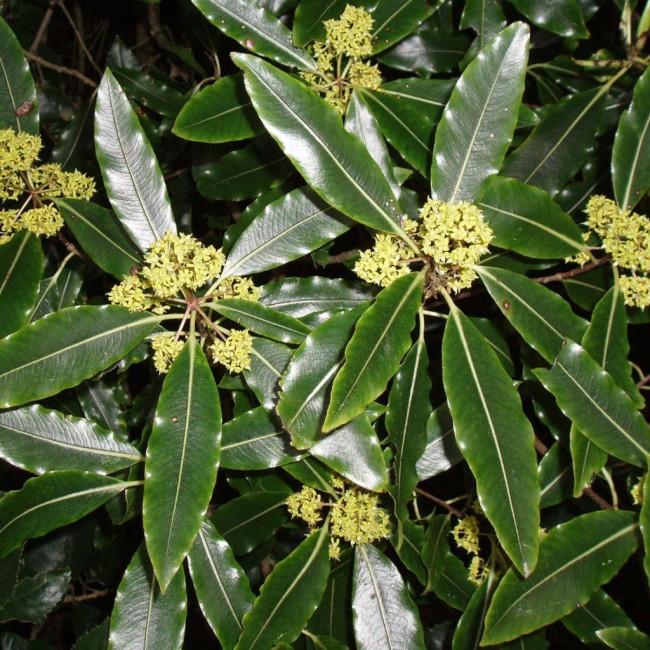
Wisteria floribunda ‘rosea’. Meneerke bloem. Wikimedia Commons.
In the Horticultural world, flowers often have to choose between color and fragrance, but Wisteria is one big exception to the rule. What I mean by this is, most colorful flowers, particularly blues and purples, are not fragrant; but white and yellow flowers often are. The reasons for this have to do with pollination and pollinator attraction. Wisteria is an exception to this rule, as it relies on color and fragrance to attract pollinators, as well as us to grow it!
If any one flower has the power to dazzle in spring, look no further than Wisteria. Not only does it grow to be a large vine, (one plant can cover over an acre in size) but it puts on a show stopping floral display that is unequalled. The colors can be white, purple, blue, violet, or pink, and shades of yellow around the sexual organs. Mostly grown are the Chinese and Japanese varieties, W. sinensis and W. floribunda respectively, for show and fragrance. The main differences are that the Chinese variety have shorter racemes of 3-5 inches, and twine counterclockwise, while the Japanese (floribunda) variety have racemes nearly two feet in length and twine clockwise. Otherwise the plants are nearly identical in height and stature, with bipinnate verdant green leaves, long seedpods, and the ability to take over everything in their way!
Wisterias are native to Eastern Asia (Northeast China and Japan) with a few species in the United States. The Asian varieties open in late April to early May before or with the leaves, and bloom up to a month depending on weather. The fragrance of the Asian varieties is between grape and violet, much like Black Locusts that tend to bloom at the same time. This makes sense given they are all part of the same family (Legumes). The Chinese Wisterias tend to be more forthright with fragrance than the Japanese, particularly the Alba variety.They are hardy to zone 5 and will grow in nearly any condition of soil, although they have a preference for moist humus. 
Wisteria sinensis. Nadiatalent. Wikimedia Commons.
One word of caution must be said about growing Asian varieties of Wisteria in the Eastern United States- they are horribly invasive in the Southeast, throttling many forests in the Piedmont and Coastal plain regions. Another word of caution must be said about growing them in gardens- these vines are extremely heavy! If you plan to grow either W. sinensis or W. floribunda, give it a concrete or steel-framed structure for support, or risk a mature vine tearing up your pergolas or house siding in a few years. They do take a few years to mature, up to twenty to bloom, but the process can be expedited by cutting the trunk and growing in drought conditions. Also the seeds are poisonous, so plan to remove the pods as they form unless you want to clean up seeds and sprouts every year and risk pets and children being poisoned. As a matter of fact, I would actually suggests that we leave these specimens to well-to-do gardens and botanical gardens since they are often more appreciable when grown by others!

Wisteria frutescens. Loughmiller et. al. 2003. http://www.wildflower.org.
Lastly, there are varieties native to the Eastern United States that are not invasive like their Asian brothers, and I suggest planting these instead as they are just as lovely, and much more manageable; even blooming earlier in their lives than their Asian kin. The vines themselves grow to only half the size, but unfortunately, so do the racemes of flowers. The American Wisteria, Wisteria frutescens, grows in many forests in the Eastern United States and makes for lovely bonzai specimens. The bloom window is later in May and into June, but shorter, and the flowers are not very fragrant, and carry soapy overtones. The Kentucky Wisteria, Wisteria macrostachya is not pleasantly fragrant, but is our one true blue Kentucky native outside our UK basketball team! Now if only the flowers were UK blue to match…
There are other Wisterias out there, some blooming later in the summer that are also pleasantly fragrant, and some with repeat blooms. They have overall made a wonderful impression on Oriental arts, and I cannot help but to think of Chinese vases or Japanese plates with Wisteria blooms bedecking them.


